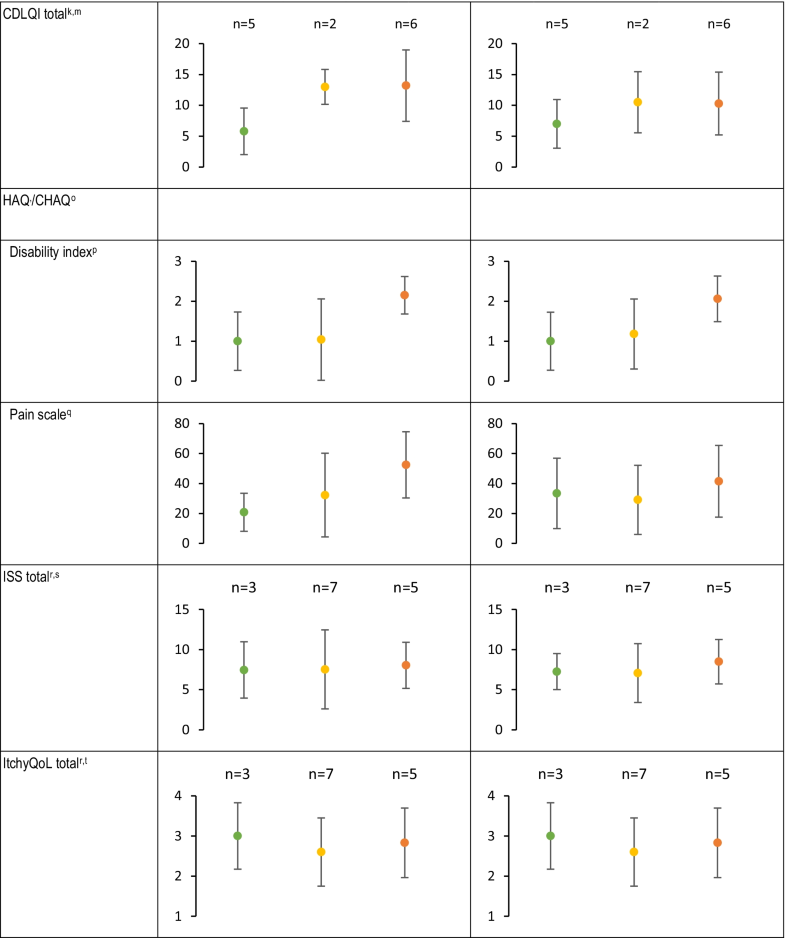



- CHAQ Childhood HAQ, CLDQI Children’s DLQI, DLQI Dermatology Life Quality Index, EBDASI Epidermolysis Bullosa Disease Activity and Scarring Index, HAQ Health Assessment Questionnaire, iscorEB Instrument for Scoring Clinical Outcomes for Research of Epidermolysis Bullosa, ISS Itch Severity Scale, ItchyQoL Itching Quality of Life Survey, QOLEB Quality of Life in Epidermolysis Bullosa
- aMaximum possible EBDASI activity score is 230
- bMaximum possible EBDASI damage score is 276
- cMaximum possible EBDASI total score is 506
- dMaximum possible iscorEB clinician sub-scale score is 114
- eMaximum possible iscorEB patient sub-scale score is 120
- fMaximum skin involvement score is 60
- gMaximum possible iscorEB pain domain score is 40
- hMaximum possible iscorEB itching domain score is 8
- iMaximum possible iscorEB total score is 134
- jMaximum QOLEB total score is 51
- kMaximum possible DLQI/CDLQI score is 30
- lFor patients > 16 years
- mFor patents 4–16 years
- nFor patients ≥ 8 years
- oFor patients < 8 years
- pAdjusted for type of assistance usually needed; maximum possible HAQ/CHAQ disability index score is 3
- qMaximum possible HAQ/CHAQ pain scale score is 100
- rFor patients ≥ 18 years
- sMaximum possible ISS total score is 21
- tMaximum possible ItchyQoL total score is 5



